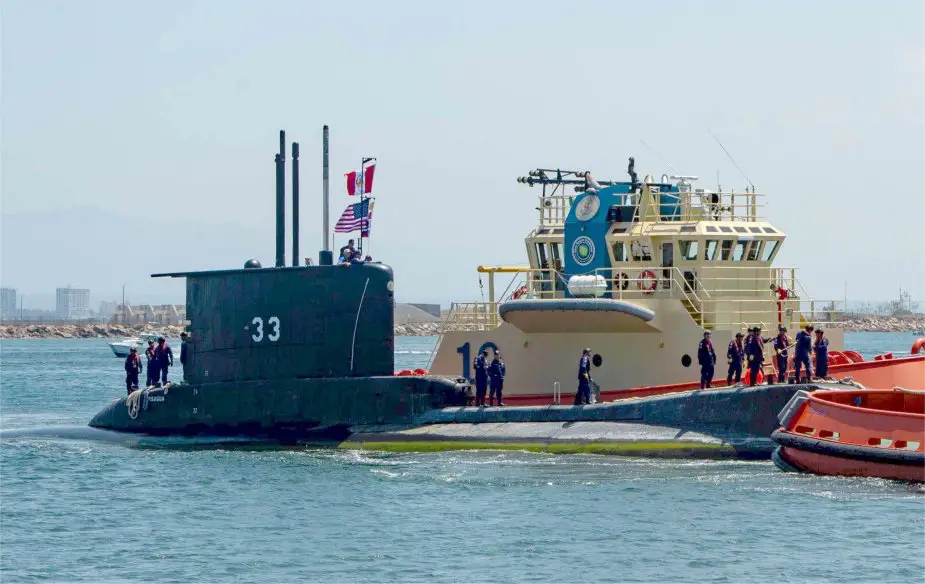Breaking news
Peruvian Type 209/1200 submarine Pisagua visits United States.
According to a tweet published by Chris Cavas on August 20, 2022, the Peruvian Type 209/1200 submarine Pisagua has arrived in the United States to conduct training at Naval Base Point Loma (NBPL) as part of the Diesel-Electric Submarine Initiative (DESI) program.
Follow Navy Recognition on Google News at this link
 Peruvian Navy's Type 209/1200 submarine BAP Pisagua (Picture source: U.S. DoD)
Peruvian Navy's Type 209/1200 submarine BAP Pisagua (Picture source: U.S. DoD)
BAP Pisagua (SS-33) is one of two Type 209/1200 submarines ordered by the Peruvian Navy on 21 March 1977. It was built by the German shipbuilder Howaldtswerke Deutsche Werft AG at its shipyard in Kiel.
While undergoing sea trials in the North Sea, it collided with a Soviet ship on 8 April 1982 and suffered damage which delayed its commissioning. It eventually arrived to its homeport of Callao in 1983.
Type 209 is a class of diesel-electric attack submarine developed exclusively for export by Howaldtswerke-Deutsche Werft of Germany. The original variant (Type 209/1100) was designed in the late 1960s.
The class is exclusively designed for the export market. Despite not being operated by the German Navy, five variants of the class (209/1100, 209/1200, 209/1300, 209/1400 and 209/1500) have been successfully exported to 13 countries, with 61 submarines being built and commissioned between 1971 and 2008.
The submarine was designed by Ingenieurkontor Lübeck (IKL) headed by Ulrich Gabler and is largely based on previous German submarine designs (in particular the Type 206) with increased equipment.
The design is single hulled and allows the commanding officer to see the entire submarine from the bow to stern while standing at the periscope. Four 120-cell batteries are located forward and aft of the command center in the lower deck and make up about 25% of the boat's displacement.
Two main ballast tanks with forward and aft trim tanks allow the boat to dive. They are powered by four MTU diesels and four AEG generators. The AEG electric motor is attached directly to a five- or seven-bladed propeller.
The submarine Pisagua has a length of 55.9 m, a beam of 6.4 m, and a draft of 5.9 m. She can reach a top speed of 11 knots surfaced and 21 knots (39 km/h) submerged.





























